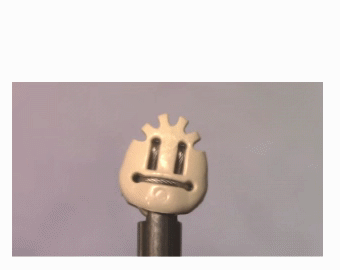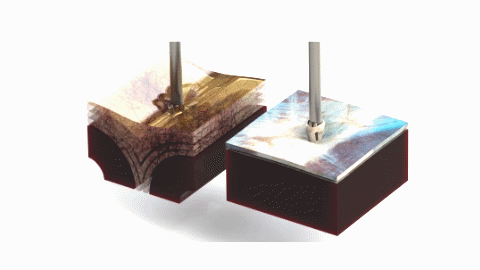Current dissection instruments tend to be either sharp (e.g. scalpels & scissors) or hot (e.g. electrosurgery & ultrasonic). They are wonderful because they cut through everything, and they are terrible because they cut through everything.
Differential Dissection is very different. It differentiates between two different types of soft tissues – loose connective tissues and dense connective tissues. Dense connective tissues comprises the walls of ducts and blood vessels, the wrapping of nerves, the capsules of organs and glands, and others. Loose connective tissue comprises fat, areolar tissues, and reticular tissues. Loose connective tissues glue dense connective tissues to each other, so advancing a surgical plane usually requires disrupting the loose connective tissue, while not damaging the dense connective tissue. The Differential Dissector does this automatically, allowing surgeons to rapidly and safely advance surgical planes.
This differentiation between these tissues occurs because they have very different microanatomies and mechanical behaviors. Dense connective tissue has a high volume fraction of strong fibers (e.g. collagen and elastin), and these fibers are densely packed and usually highly organized. In many tissues the fibers are packed side-by-side into sheets or helical wraps. In tendons and ligaments, collagen fibers are aligned nearly in parallel.
Loose connective tissues, conversely, have a low volume fraction of strong fibers. The bulk of the tissue is usually a softer tissue with less structural integrity, like fat (adipose tissue) or hydrogel (of many different types). Furthermore, the fibers aren’t organized. They are diffuse and run in many directions through the tissue.

The Differential Dissection Tip (DD Tip) is made of a rigid plastic (surgical grade PEEK) that has fingers but is otherwise smooth and polished. There are no sharp edges anywhere. The DD Tip is driven by a motor in the handle such that it oscillates from side-to-side at 100 to 150 Hz.

As seen in the video below, the fingers can’t gain purchase on the fibers of a dense connective tissue, and the DD Tip simply slides over the surface of the dense connective tissue. The situation is different with a loose connective tissue. Here, the fingers of the DD Tip can swipe through the hydrogel/fat and engage the diffuse fibers, disrupting them. Thus, the Differential Dissector “differentiates” between these tissues by virtue of the tip’s shape, its speed of oscillation, and the biomechanical and microanatomical differences between these two tissues.

